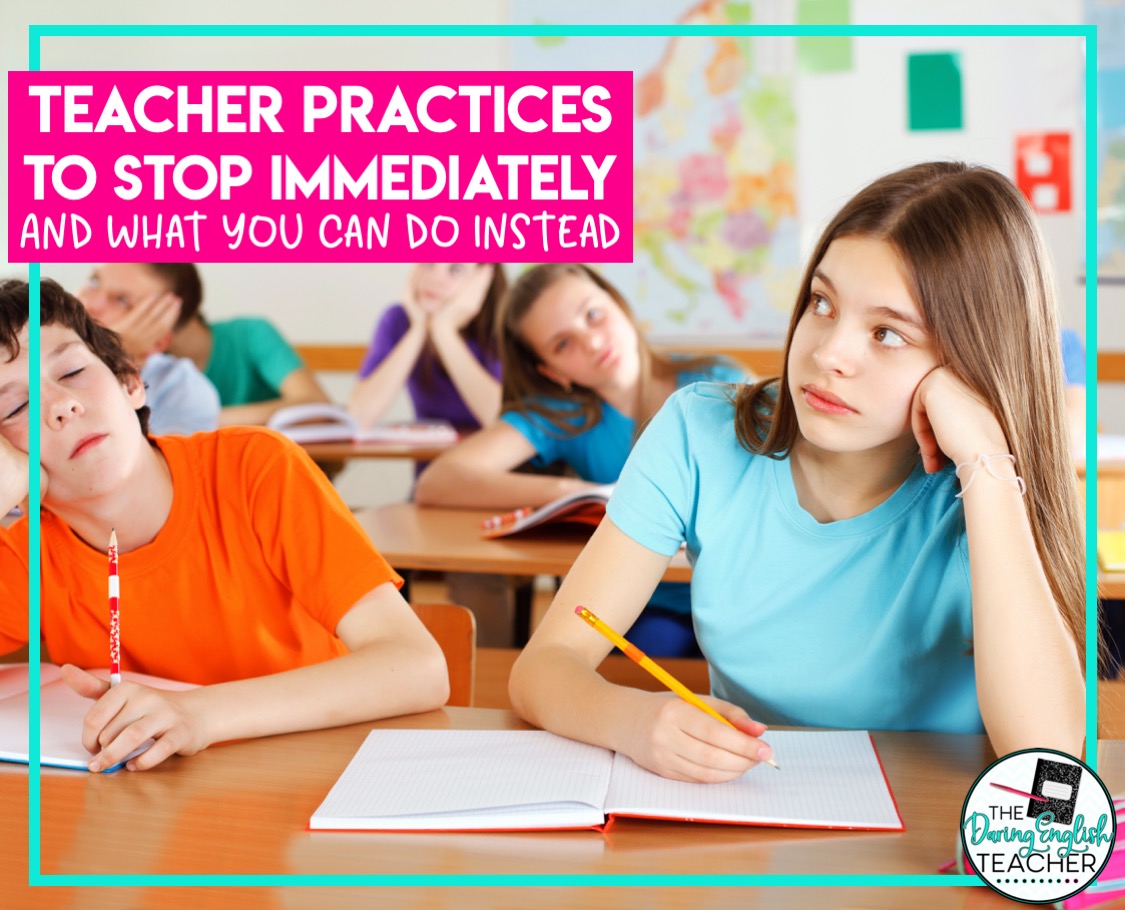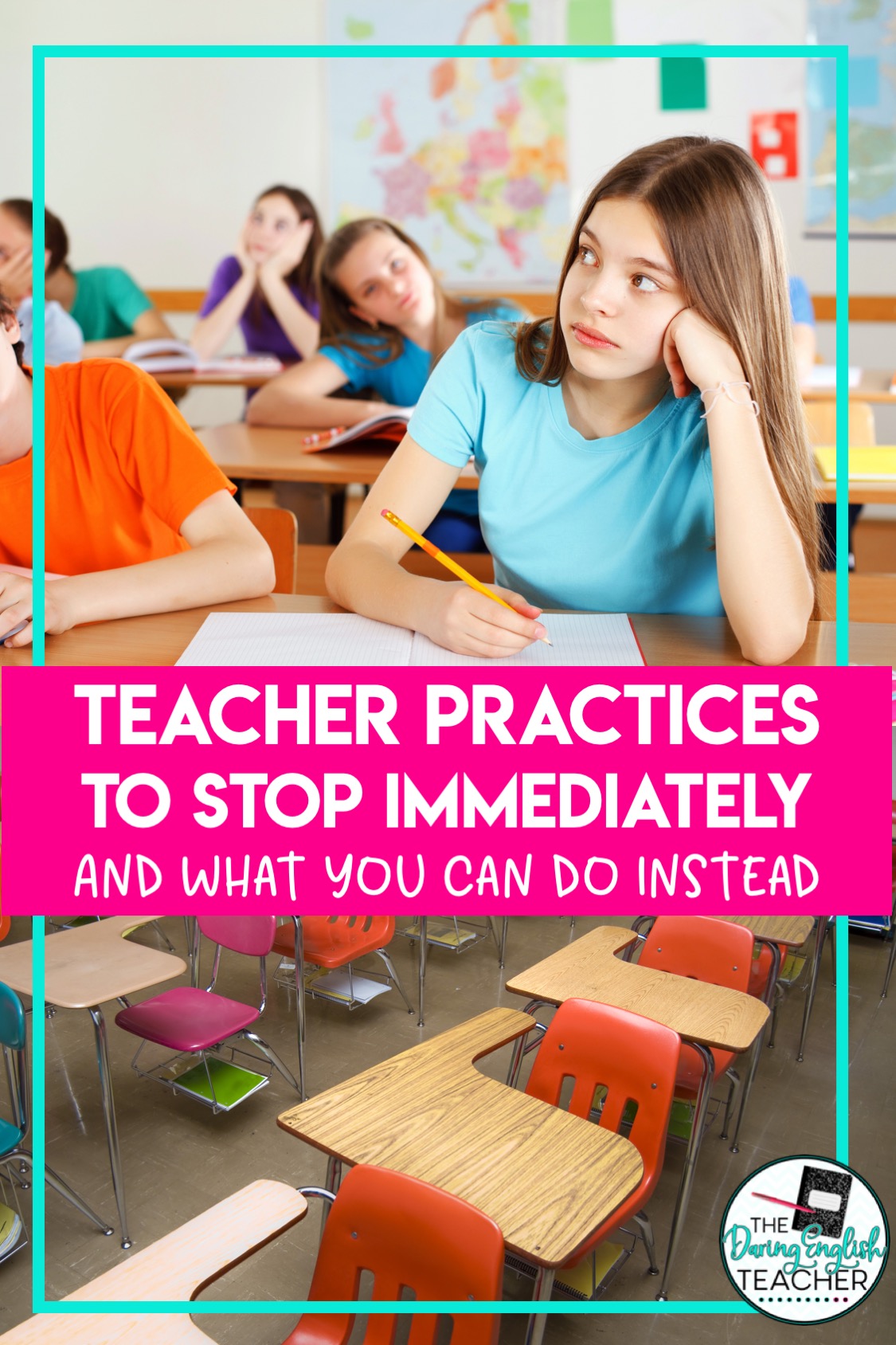As someone who graduated in the very early 2000s, I’ve seen the dynamic shift in educational practices and pedagogical strategies. The high school classrooms in which I once learned are far different from the high school classroom in which I teach. And this is a good thing.
While some strategies have lasted through time, others are no longer beneficial to students. Here is a look at three teaching practices that you should stop immediately and what you should do instead.
1. Popcorn Reading
Popcorn reading is one of the most anxiety-inducing classroom practices. What is the objective of this stressor anyway? Is it to make sure students are following along? Is it to assess student fluency? Is it to intimidate students into paying attention? Is it to fully help students comprehend the reading? Is it to catch students when they aren’t paying attention? Is it to humiliate students in front of their peers?
Whatever the reason, I can guarantee you that is it more harmful than beneficial. I still remember one day sitting in my eighth-grade classroom. I wasn’t the best out loud reader; I stumbled over words and had a difficult time pronouncing challenging words. And, like many people, I got nervous speaking in front of people. In my reading class that day, we were whole-class popcorn reading our class novel. I remember sitting there with butterflies in my stomach mildly feeling like I was going to be sick. I remember desperately hoping the teacher would not call on me. I remember fearing having to read aloud in front of my classmates.
Then, it happened. My teacher called on me. Usually, when this happened, I tried my best and stumbled through the words as I choppily read aloud. However, this time was different. I was overcome with fear, panic, and anxiety. I froze, and then I laughed. And then I could not stop laughing. I nervously laughed in front of all of my classmates for what felt like an eternity until my teacher eventually called on someone else.
I was mortified, humiliated, and defeated. After that day, I employed all of the usual student tricks to avoid reading out loud at all costs.
Okay, so if we aren’t supposed to do popcorn reading in class anymore, what do we do? Well, the answer to that question lies in the objective. If a teacher is trying to assess fluency, small group reading and reading aloud at the teacher’s desk is a much better option.
However, as a gen ed high school English teacher, fluency is not on my mind. Instead, I just want to read as a class. So, I call on volunteers. Usually, every class has several students who want to read out loud and who are good at it. So, I call on volunteers. I have them raise their hands and then I inform them about the order in which they will read aloud. If I don’t have enough volunteers, I read aloud, I assign small group reading, or I have the students read independently.
If the objective is to make sure students are paying attention, I make sure that we circle back together as a whole class to review the content before we move on to something else.
2. Cold-calling Students
Cold-calling on students in a whole-group setting is another educational practice we should ditch. Again, what is the objective? Are we trying to review the content? Are we trying to catch kids who don’t know the answer? Are we trying to embarrass students in front of their classes? Just like popcorn reading, cold-calling on students for answers raises their affective filters and creates a stressful and anxiety-induced classroom experience.
Instead, there are a plethora of strategies to use instead. One thing I like to do is have students work on something in groups and walk around and monitor student work. I’ll visit each table and ask the small groups questions. Then, I’ll ask one person at the table to share their answer aloud. I’ll even talk with them and make sure they have the correct answer before they share it aloud in front of the entire class. This helps raise their confidence in sharing the answer aloud.
Another great strategy to use is think, pair, share -but do it twice. Then, you can call on a group rather than an individual student, and they can either share their answer or an answer from their peers. Rather than cold-calling students, collaborative workk is much more student-friendly.
3. Grading Every Single Assignment
If you are doing this, STOP! Grading every single assignment is one of the quickest ways to burn yourself out real fast.
Instead, think of assignments as practice and performance. Practice assignments are not worth as many points, but students receive full credit for their practice and effort. On the other hand, performance assignments are for a grade. This is where you are assessing student understanding.
Another thing you can do is if you have a variety of similar assignments, have a student select just one that they want to turn in for a grade. All of the other assignments are practice and assigned a participation grade, but you are only truly grading one assignment. It’s a much better way to help manage the English teacher workload. After all, we have a lot of students.
If you’re looking for a way to help you streamline your essay grading, check out this blog post about my essay grading philosophy!
When we sit back and evaluate our teaching practices, we can begin to make changes that not only affect our teacher workload and stress but also benefit our students’ mental health.




One Comment
I graduated 1988. These were unacceptable then! Sweet Baby James!!!